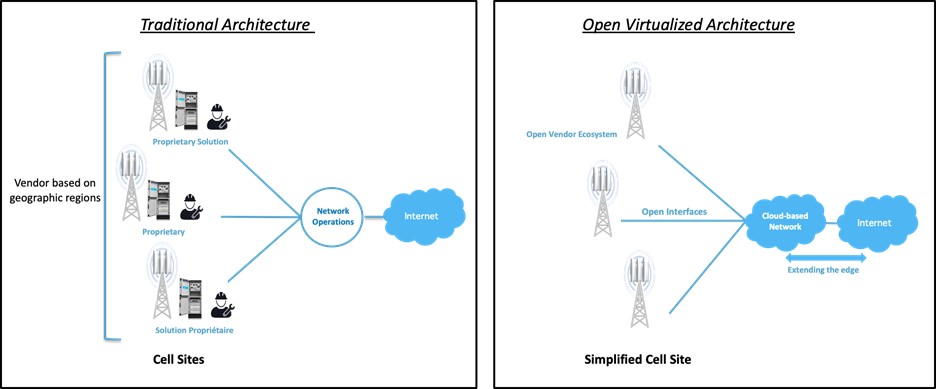Shabbir Bagasrawala: A Clarion Call for Supply Chain Diversity in Our Telecom Networks
Limited competition is provided by the existing trio of vendors. This worsens the supply chain problem for operators.
Broadband Breakfast

As countries across the world are reacting and adapting in their own ways to manage COVID-19 impacts, the data and communications network across the globe has become the proverbial nervous system to cope with the pandemic. Never has networking played a more profound role in ensuring continuity of many areas of life and will be viewed in hindsight as one of the foundations that powered the zeitgeist of this challenging period.
However, as service providers are factoring this surge in traffic in their 4G expansion and 5G build out plans, many mobile network operators are looking into the long-term implications of this growth in data demand.
One aspect that will need to be re-examined is the supply chain for the radio access network infrastructure that drives wireless mobile networks today. The RAN consists of the equipment at cell towers, and forms the larger part of wireless networks today.
Challenges with current RAN supply chain
Currently the supply for this equipment is dominated by three vendors: Huawei, Nokia and Ericsson. More than 80 percent of global market share for this equipment is owned by this trio, thus making networks in many countries overly dependent on them.
The radio equipment that goes on the towers, the adjunct equipment deployed at the bottom of the tower and the software is a proprietary solution provided by one of these vendors. The interfaces connecting the different components are proprietary and closed, making modularity and audits extremely difficult.
The limited competition provided by the existing trio of legacy vendors as well as the regulatory intervention, and even curtailment, of Huawei as a vendor in some regions is leading to a duopoly scenario. This worsens the supply chain problem and often leads to significantly higher costs for the operators who have no negotiating leverage.
The open RAN alternative
Consolidation of the supply chain to this trio has been a problem that the industry as a whole has been examining even before the pandemic. Initiatives such as the O-RAN Alliance and the Open RAN Policy Coalition were formed by mobile services providers and vendors to push for new standards and policies, promoting a new supply chain through open RAN.
Open RAN broadens the vendor ecosystem through the availability of standardized interoperable interfaces between different elements within the RAN. This transforms today’s vertical solution, provided by one vendor, into a modular alternative where each part of the system can be supplied by a number of vendors. Open RAN retains competitiveness and enables the mobile network operator to acquire best-in-class network elements.

By virtue of introducing modularity, there is an opportunity for new vendors and startups to participate in this market and thus drive innovation as well as competition in specific niches of RAN functionality.
Call to action
Mobile networks in many countries are now in a precarious situation due to overly narrow supply chain options available to them. These operators owe it to themselves as well as the subscribers that they are serving to consider an
Open RAN approach in addition to their current legacy vendors. Not only will this help improve overall innovation and competitiveness in the industry, but it could also provide them the security of having a diverse pool of vendors through which they can build and sustain their network.
To achieve this diversity we propose the following steps to be taken :
- Open interfaces to allow for modularity need to become a requirement for future networks that are being built out for next generation networks
- Standards bodies actively consider work items that are non-biased towards supporting open specifications
- Create more interoperability labs to ensure more vendor participation and especially smaller innovative companies
- Mobile network operators should carve out a portion of their 4G networks to actively begin the transition towards open RAN and to actively drive demand for such kind of solutions
- Train procurement teams to use more multi-dimension analysis for vendor selection
- Regulatory bodies actively encourage such diversity through incentives
- Government organizations fund and participate in studies that pave the path for open RAN mechanisms in the network
- Transitions to cloud will enable software disaggregation which will lead to accelerated upgrade cycles as well as introductions of new vendors
A lack of vendor diversity weakens the overall wireless network because the lack of competition means less innovation, higher costs and the potential for single-vendor vulnerability. This is unacceptable in a world where 5G technology is designed for innovation that we can’t even begin to predict.
It’s also unacceptable in a world slowly coming out a pandemic that will need its networks to support new work, information and entertainment models – and more data – for years to come. Modular and open network are the way forward.
Shabbir Bagasrawala serves as head of the go-to-market team at Altiostar. His team is currently leading technical engagements with mobile network operators globally and helping them adopt open virtualized RAN solutions into their networks. He has more than 15 years of experience in the telecommunications market with a focus on wireless networks and holds several patents in wireless. This piece is exclusive to Broadband Breakfast.
Broadband Breakfast accepts commentary from informed observers of the broadband scene. Please send pieces to commentary@breakfast.media. The views expressed in Expert Opinion pieces do not necessarily reflect the views of Broadband Breakfast and Breakfast Media LLC.









Member discussion